Happy Wednesday, FAC NM community!
Navigating the world of insurance for your home, business, or property can feel inherently complex and chaotic. Increasingly destructive wildfires and longer wildfire seasons are adding to the confusion as insurers respond to environmental upsets by changing or dropping their wildfire insurance policies. This week we will be discussing how communities can maintain wildfire insurance coverage by proactively working to protect their assets.
Today’s Wildfire Wednesday features information on:
findings from a Wildfire Insurance panel discussion from Montana,
a new report on reducing wildfire risk to insurers and the insured through loss prevention,
a webinar examining the role of insurance in mitigating the risks of wildfire, and
additional upcoming learning opportunities.
Be well and stay curious,
Rachel
Panel Discussion
Promoting and expanding wildfire risk reduction efforts
A panel of representatives from various insuring agencies (American Property Casualty Insurance Association, Insurance Institute for Business & Home Safety, Chubb Insurance) gathered in early 2021 to discuss how to better align the wildfire risk reduction efforts of community leaders and insurance providers. Hosted by the Fire Adapted Montana Learning Network, the group discussed ways to find common ground and forge alliances between Offices of Emergency Management, property owners, and insurers to ensure that everyone is better prepared for and able to mitigate wildfire risk in the wildland urban interface (WUI).
Discussion topics included:
how homeowners can live in the WUI and keep or obtain their wildfire insurance coverage,
the changing nature of wildfires as they expand further into the urban portion of the WUI,
the impact of home construction on personal wildfire risk,
increasing costs of wildfire disaster claims,
tools for mitigating risk in advance to prevent wildfire losses before they happen,
and more!
View the full discussion recording here or play the video below.
Report: Tamping Down Wildfire Threats
How insurers can mitigate risks and losses
A new report out of the Insurance Information Institute delves into the evolving complexities of wildfire threats to homes and properties and how insurers can and should respond. The intent of the report is to provide recommendations for collaborative risk mitigation and to act as a jumping off point for future topical conversations.
The beginning of the report focuses on how wildfires are not just more destructive than in the past: they now behave differently, with three out of the last five years exhibiting some kind of novel fire behavior. Beyond the immediate threat of the fire itself, increasingly intense wildfires tend to destabilize soils, increase flood risk, impact human health and quality of life, and may even be influencing hurricane frequency and intensity along the Atlantic coast. These realities represent a hardship for communities living with fire and a challenge for the insurers facing exponential increases in damage claims expenses.
“Insured wildfire losses are on the rise,
but insurers’ appetite for writing coverage in fire-prone areas has declined in recent years; however, ceasing to insure complex risks isn’t a strategy for long-term success. What’s needed instead is risk reduction, pre-emptive damage mitigation, and a deeper understanding of the evolving nature of this hazard.”
Recommendations to emerge from the report
Better mitigation is a starting point
The impetus is on both at-risk communities and insurers. As the President and CEO of IBHS writes, “to strengthen the resilience of vulnerable homes and communities, adoption and enforcement of wildfire codes and standards must increase.”
Uncomplicate claims management
Accelerating the pace and accessibility of the insurance claims system can make a big difference in how policyholders experience a catastrophic wildfire. Insurers are finding creative methods to process claims and adjust property values remotely to speed up the claims process.
Keep an eye on parametric insurance
“Instead of paying for damage that has occurred, [parametric insurance] pays out if certain agreed-upon conditions are met, regardless of damage. For example, a parametric policy might pay out when a certain threshold of ‘acres burned’ is exceeded”, simplifying the process.
Data is the key
“Climate resilience requires a sophisticated data strategy, yet only 35% of insurers… said they have adopted advanced tools – such as machine-learning based pricing and risk models – that [are] critical to unlocking new data potential and enabling more accurate risk assessments.”
Upcoming learning opportunities
Webinars
November 30 @ 10am MST: Wildfire Risk and Insurance
In the third installment of the “Sparking Solutions” webinar series from Resources for the Future (RFF), experts will discuss the important role that insurance plays in sending signals about risk, how to balance that with equity and affordability, and what options exist for handling the growing problem of insuring wildfire risks.
Register now and revisit parts I and II of the Sparking Solutions series.
December 6 @ 12pm MST: Increases in large wildfire driven nighttime fire activity
Patrick Freeborn will discuss the results of 17 years of active fire data to characterize daytime and nighttime dynamics of wildfires across the continental US. The data indicate that nighttime fire activity in on the rise, largely due to large wildfires influencing local weather to create the conditions for fires to persist through historically cooler and wetter hours.
Register here to attend.
Workshops
November 30 @ 6pm MST: NMAA Workshop - Infrastructure Funding
The New Mexico Acequia Association (NMAA) is hosting a virtual workshop (zoom or phone) on applying for Infrastructure Funding. Register now to learn more about Capital Outlay, ACDIF and RCPP! Questions may be directed to serafina@lasacequias.org







